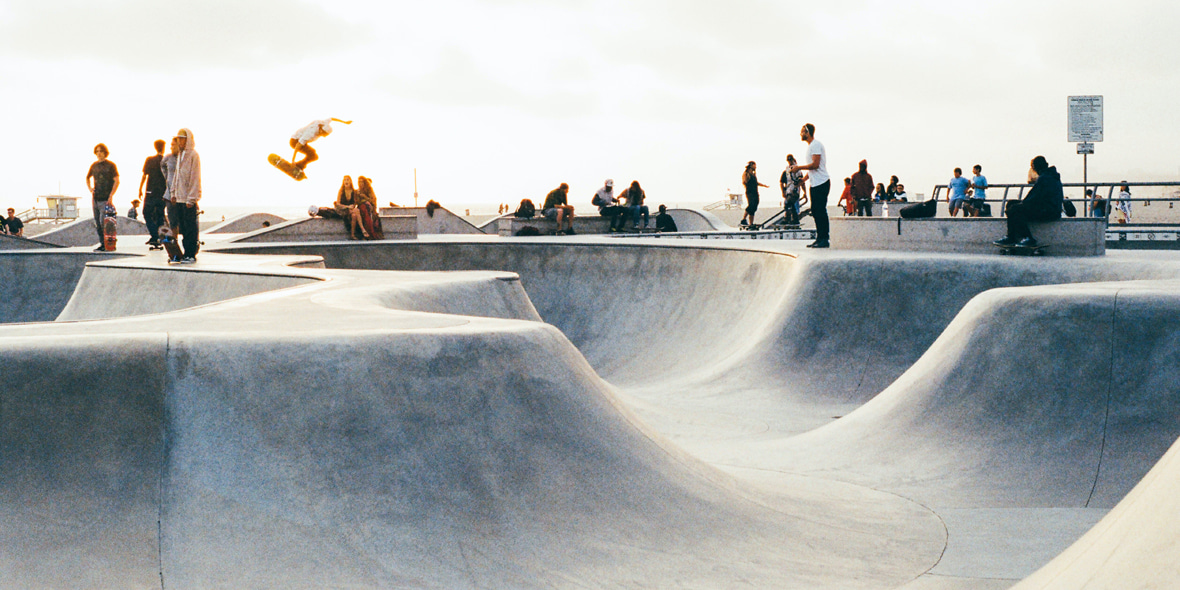What and where is the nearest skatepark near me? Explore the world's largest and most comprehensive skateboard park map.
There are around 5,000 indoor and outdoor skateparks in the world.
The majority are located in North America and Europe, where skateboarding is a synonym of street culture.
But the truth is that public skateparks are popping up everywhere around the world, especially since skateboarding became an Olympic sport.
They're relatively inexpensive and easy to build. Furthermore, a skatepark is a simple way of bringing more young people into outdoor sports, no matter their skill levels.
Explore our world skatepark map.
What Makes a Good Skate Park?
Ideally, a perfect skatepark would feature all available elements, that is, half-pipes, quarter pipes, full pipes, vert ramps, a long pump track, snake runs, bowls and pools, banked ramps, fun boxes, multiple handrails, spine transfers, stair sets, pyramids, ramps, and other objects and obstacles.
Size does matter, although sometimes design and smart use of available result in better and more fun skateparks.
A skatepark designed and built by an experienced skater is almost always a synonym to a world-class skateboarding arena.
Skateparks provide skating experiences and innovative riding circuits that allow participants to tick all complexity levels.
The Guangzhou Skatepark, located in Guangzhou, China, is the world's largest skatepark in the world.
Abandoned waterparks are also being used as skateparks.
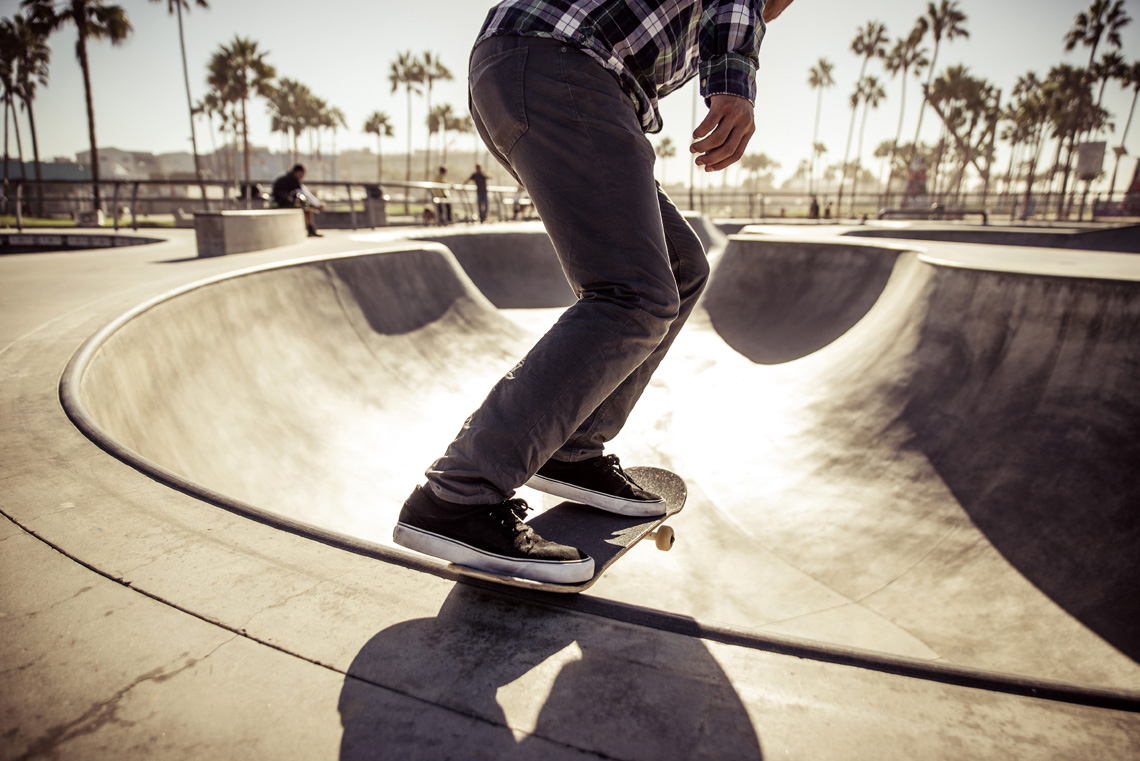
How Much Do Skateparks Cost?
A skatepark has a very interesting and reasonable return on investment (ROI).
There are two types of costs associated with public and private skateboards: the design and construction investment and the maintaining and operating expenses.
The price to build a skatepark ranges from $25 to $60 per square foot depending on several factors, including the location, the facility's amenities, the design constraints, the degree of detail in the overall design, the cost and distance to construction materials, the level of complexity of the drainage system, the site preparation requirements, the size, and the overall soil condition.
In the end, the average price to bring a skatepark to life is $45 per square foot.

The History of Skateparks
The origins of skateparks date back to the mid-1800s when communities started building the first public roller-skating rinks and gardens.
The Strand and Floral Hall in London and Rhode Island's Newport were the first to host these innovative sports facilities.
According to the book "The Skateboard: The Good, the Rad, and the Gnarly: An Illustrated History" by Ben Marcus, the world's first skateboard park was likely the Surf City in Tucson, Arizona, which opened in September 1965.
On September 2, 1965, the Tucson Daily Citizen newspaper featured a photo of the newly opened facility under the title "Surfing - Tucson Style."
The accompanying caption read:
"These youngsters tried out the 138-foot concrete skateboard runway at Surf City, 2169 E. Speedway, today in a test- run for tomorrow's grand opening. The new outdoor recreation spot is operated by William Barton and Mac Marshall, president and vice president of Arizona Surf City Recreation Enterprises Inc. Miss Pat McGee, world champion girl skateboarder from San Gabriel, Calif., is here for the opening. The safety helmets these boys are wearing are mandatory for all customers, Barton said."
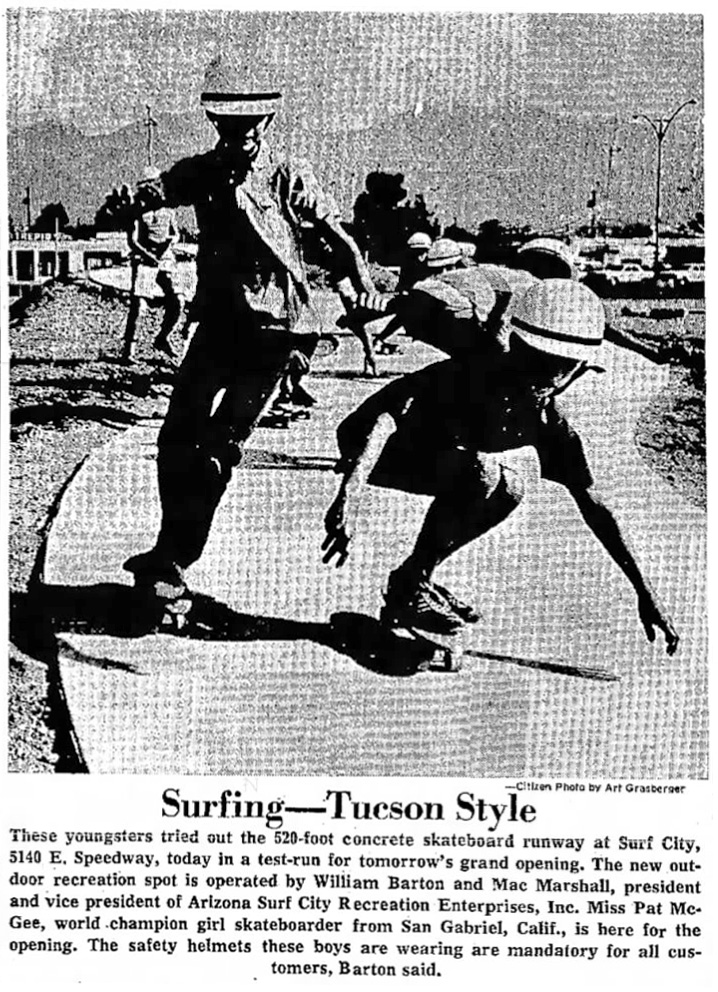
Skateboard historian Scott Starr underlines that there are quite a few parks built in the 1960s, but they had different names - centers, areas, rinks, arenas, jamborees, etc.
"But outside of the city they were built in, no one knew about them. Since they all lasted less than a year and really had no publicity, they were basically just putt-putt golf type fun, so why would they get known outside of the area?" Starr once told.
The skateboard chronicler has unearthed places to skate in at least four different US states as early as 1965.
He also found reports that Oxnard, California, was planning on building a banked-walled area for skateboarders in December 1964.
The most famous early park was Surfer's World. It opened in the summer of 1966 in Anaheim, California.
The concept was supposed to be a franchise of parks, but that never happened.
"I've got ads from newspapers where toy stores were mentioning they don't carry skateboards anymore because the sport is dangerous, and they don't want to support it anymore," adds Starr.
Other early skateparks were built in Kelso, Washington, and Orange County, California, in 1966.
A park with gently rolling paths was opened in Ventura County in the 1970s.
But the truth is that skateboarding nearly disappeared between 1965 and 1972, and the Vietnam War was only one of the many reasons why young people lost interest in the four-wheel mania.
The first commercial concrete skateparks of the 1970s were built in Port Orange, Florida (Skateboard City), and Carlsbad, California.
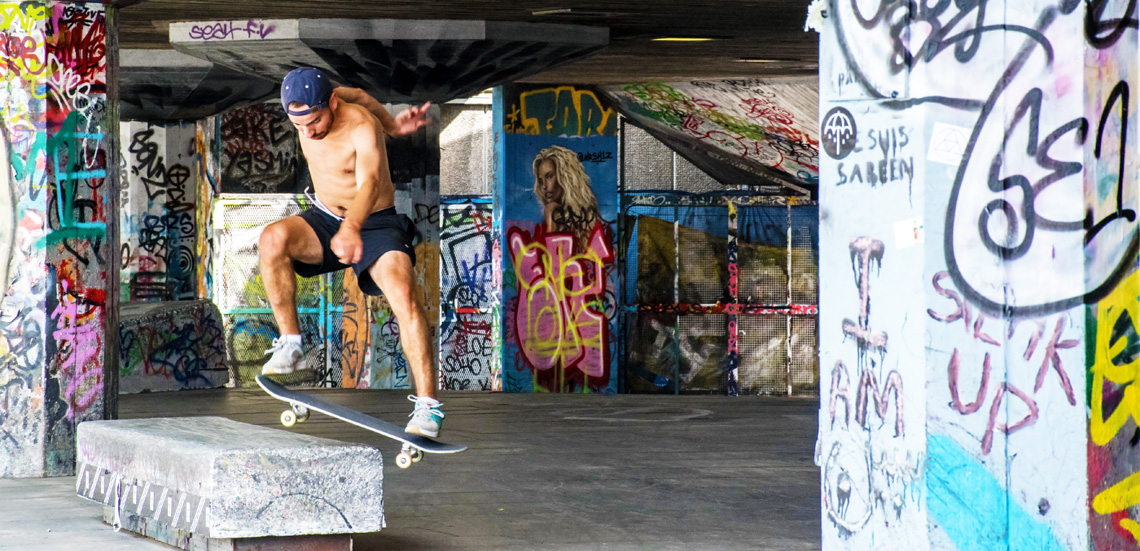
According to the 1978 October/November edition of Skateboard Industry News, there were a total of 200 skateparks across the nation, all built in just over two years.
But at the same time, the number of insurance companies willing to insure skateparks was dwindling to one and getting close to zero.
By February 1979, skateparks had multiplied, topping off at about 400 facilities across the United States.
However, most couldn't survive.
Bad design, injury litigation, and kids unwilling to pay-to-ride took their toll, and skateparks began closing as quickly as they had opened.
Hailed as the "future of skateboarding," they were becoming a disastrous option.
Astonishingly, by the beginning of the 1980s, existing skateparks had dwindled to less than a dozen.
And another setback was ready to decimate the skateboarding industry - economic contraction.
The recession shut down 90 percent of the skateparks, and within 18 months, skate shops were going bankrupt.
Those who were without access to skateparks or Californian pools started building ramps.
By 1980 the Rampage company had already sold 4,000 sets of ramp design blueprints across America as well as to 45 other countries.
Following these early ramp constructions, when many skateparks closed in the early 1980s, ramps became the staple terrain for skaters and significantly contributed to skateboarding's resurgence in the mid-1980s.
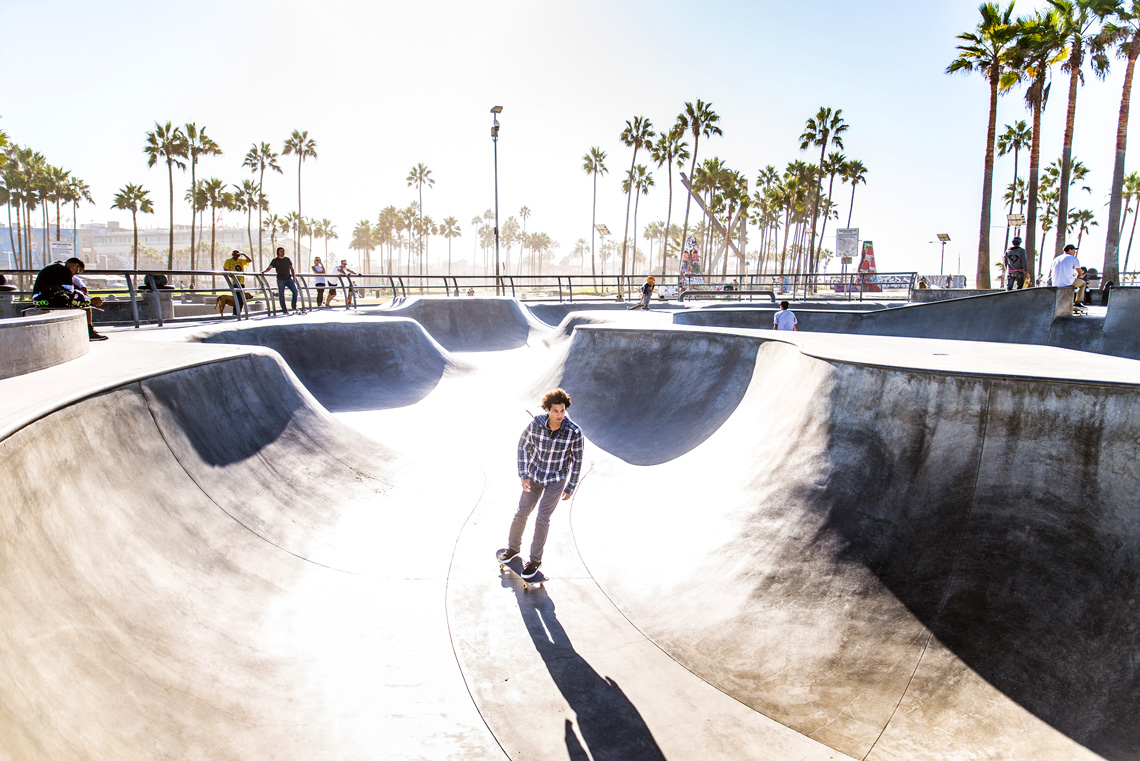
But it was Jim Fitzpatrick who ended up playing a pivotal role in the democratization of skateparks as we know them today.
In the early 1990s, and after serving for years on the Surf Industry Manufacturers Association (SIMA) board of directors, Fitzpatrick founded the International Association of Skateboard Companies (IASC).
He was also selected as the nonprofit trade association's founding executive director.
While at IASC, Fitzpatrick launched an intensive four-year campaign to change the liability laws in California that affected skateboarding.
In 1997, those laws were altered to assure California communities acceptable liability limits.
The result was the beginning of a nationwide shift in the perception of skateboarding, skateboarders, and skatepark construction.
In less than ten years, more than 2,000 public skateparks were designed, developed, and constructed across the United States.
Today, more than 5,000 public skateparks have been built worldwide, and more are opening every year.
In theory, a skatepark is a skateboarding facility for everyone, from beginners to professional riders.
But in some of the world's most popular, prestigious, and crowded skate centers, the pressure to perform tends to keep first-timers out of these concrete and metal structures.
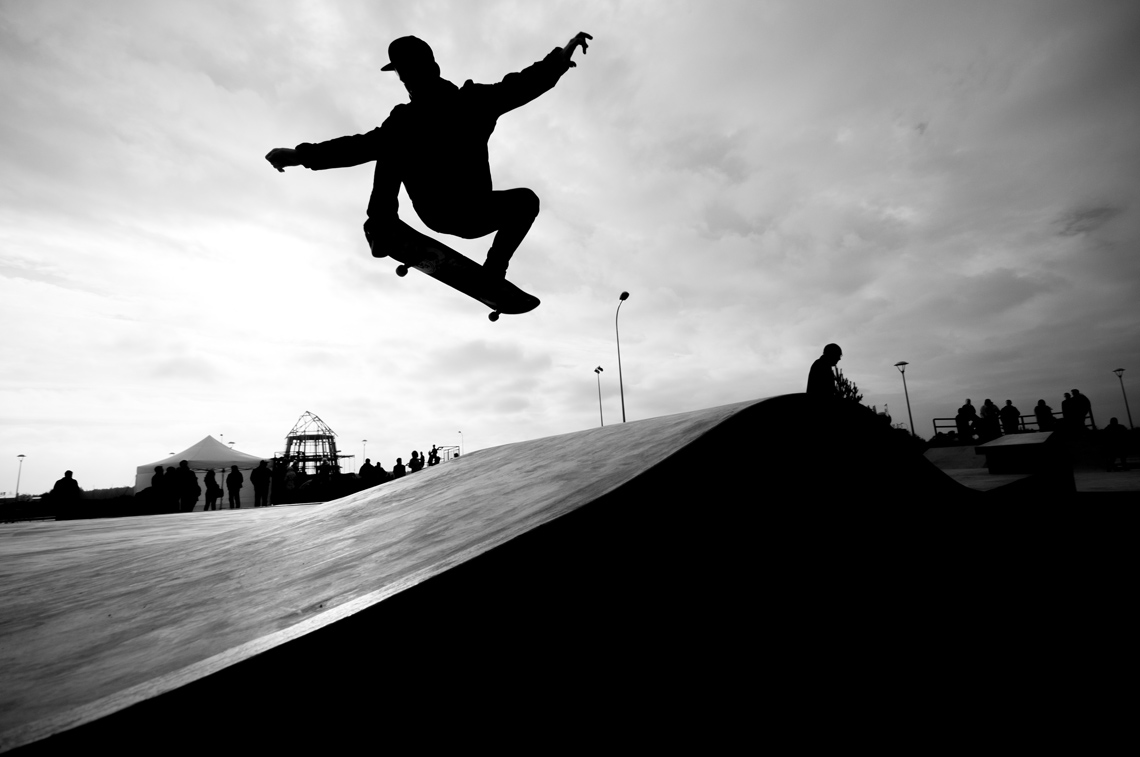
Skateboarding Styles
Skateboarding is a highly flexible and evolving sport and outdoor activity.
You can ride a skateboard to get from one place to another, but you can also use it to perform tricks and maneuvers.
As a result, skating has several disciplines and categories, also known as styles.
A style is not the look, appearance, or way in which a skateboarder moves across the street. Instead, it defines the type of riding.
As a result, the main skateboarding styles are:
1. Freestyle Skateboarding
It's one of the early forms of skating and usually involves music and choreography. It was initially developed by surfers in the 1950s to mimic the moves performed in the waves when the ocean was flat.
In the 1960s, the discipline embedded maneuvers, dancing, and gymnastics. In the 1970s and 1980s, the style shifted dramatically to ollie-based flip tricks and more creative, fluid, and technical routines. In the 21st century, freestyle skaters morphed into street skateboarding.
2. Vert Skateboarding
It's one of the most popular disciplines in skateboarding. It started when the 1976 California drought left empty hundreds of swimming pools.
Skaters began to ride down its vertical walls, and from that moment on, the trend never kept gaining new participants, especially with the introduction of half-pipes and quarter-pipes.
Vert skateboarding is fast, eye-catching, radical, and dangerous, i.e., it epitomizes the spirit of the sport.
Vert skaters get airborne and, in the past, were responsible for the closure of many skateparks. Why? Because the number of injuries increased and the insurance costs skyrocketed, make them undesirable hotspots.
3. Street Skateboarding
It's probably the most participated discipline in skateboarding. Skaters use public areas and urban environments to perform a broad range of maneuvers, tricks, slides, airs, and grinds.
They take advantage of city obstacles like stairs, handrails, walls, benches, drainage ditches, flower beds, bins, and other street furniture to unleash their creativity and technical skills.
4. Park Skateboarding
As skateparks flourished across the world, skaters shifted from the public space to their own arena. A skateboard park has everything a skater needs to develop their talent.
With the advent of half-pipes, ramps, pyramids, and stair sets, riders finally found a place - their stadium - where they could be themselves and share their moves with other fellow skaters.
5. Pool Skateboarding
Pools and bowls were first used by California surfers in the 1970s to spend time when the ocean was flat. But this unusual form of skateboarding stuck and became a respected, hard-to-master skating style that still resembles riding real waves.
6. Cruising or Longboard Skateboarding
It's skateboarding's most laid-back style. Equipped with longboard skateboards, riders roll around without too much effort for the pleasure of gliding across long, flat surfaces.
It's all about enjoying the ride and commuting smoothly from one place to another without the pressure to perform.
7. Downhill or Slide Skateboarding
It's probably the most dangerous skateboarding style. Whether competing for the fastest time or simply showing off for YouTube, downhill skateboarders often risk their life racing down the mountain and steep roads at 60+ miles per hour.
Skateboarding's most extreme discipline requires a lot of practice, and the use of safety equipment, including helmets, gloves, knee and elbow pads, and a great dose of luck.
8. Big Air Skateboarding
It's one of the most recent skateboarding disciplines. It involves a mega ramp, a lot of speed, and acrobatic stunts. X Games popularized big air skaters.
9. Technical Skateboarding
It's a sub-genre of street skateboarding, but with a sophisticated twist and highly complex tricks and maneuvers. It is generally performed on flat surfaces.
10. Parkour Skateboarding
It's skateboarding's real-life gaming style in which skaters set up a list of routes, obstacles, and goals in urban spaces and try to complete them.
Have we missed a skatepark? Send us an email.
